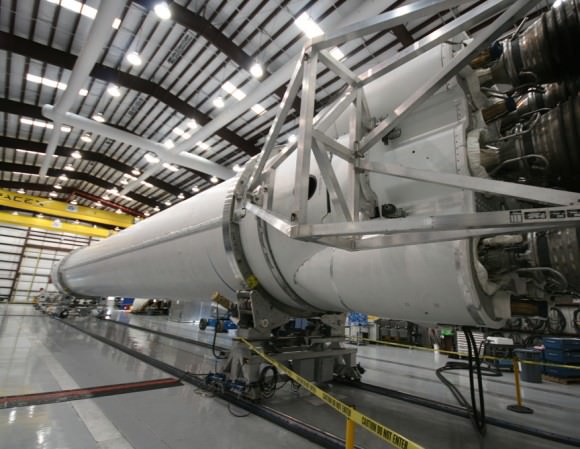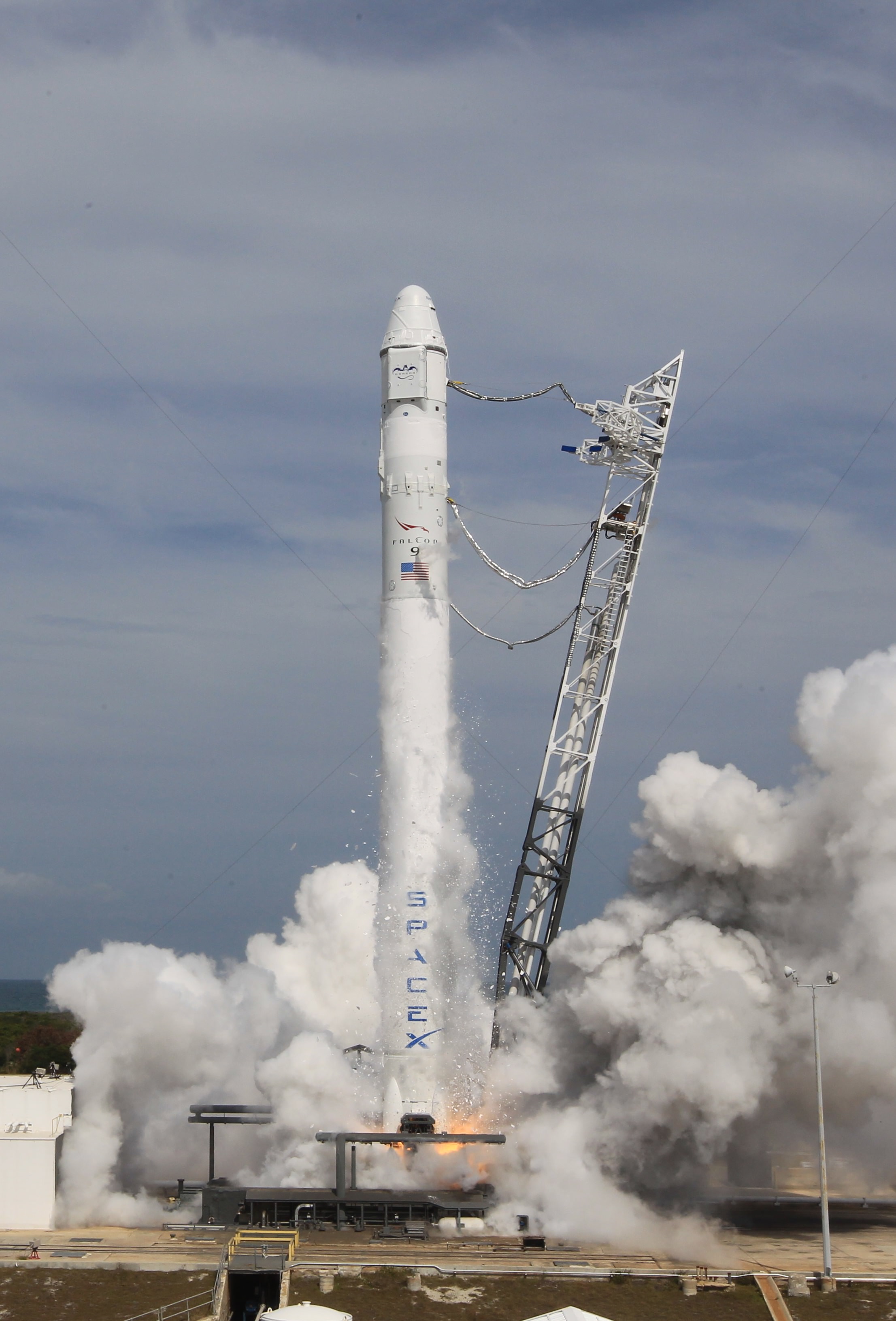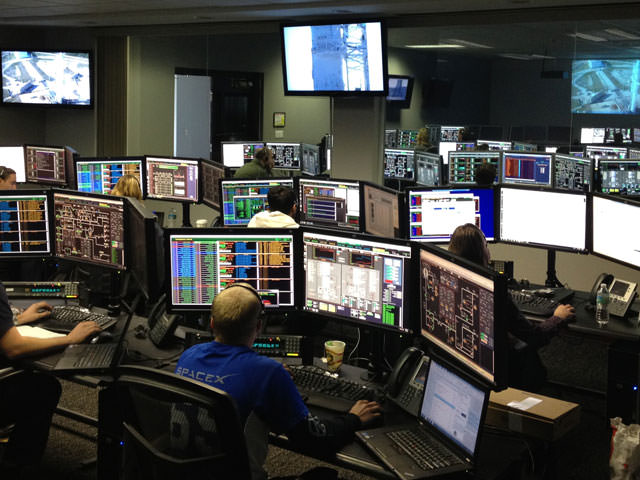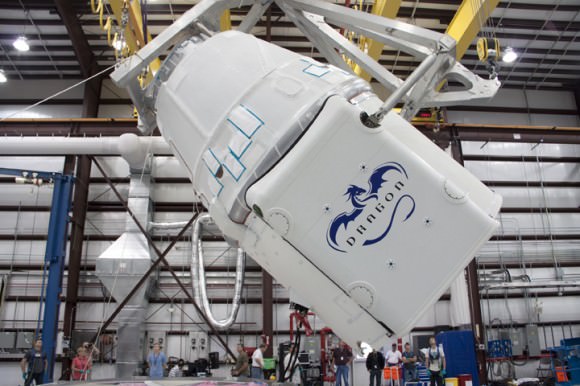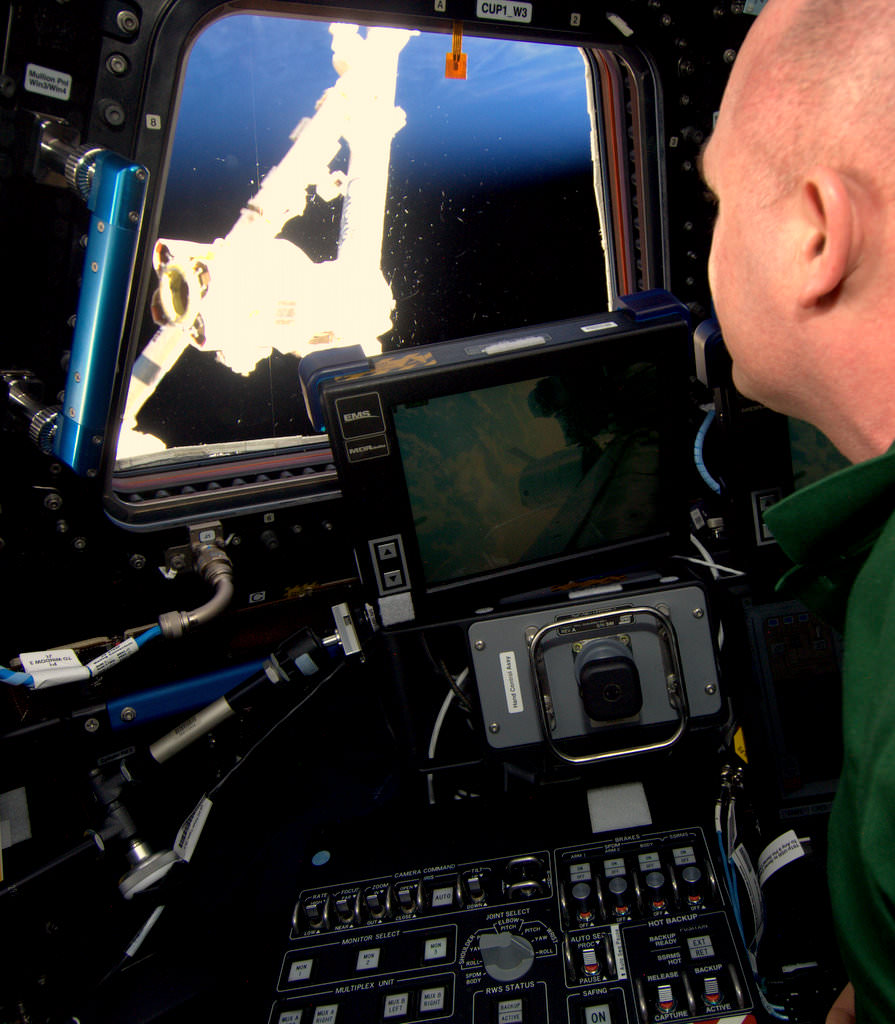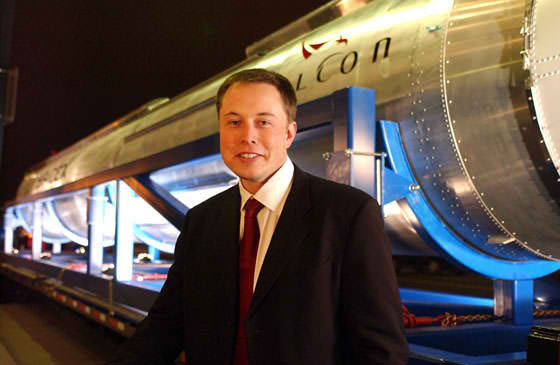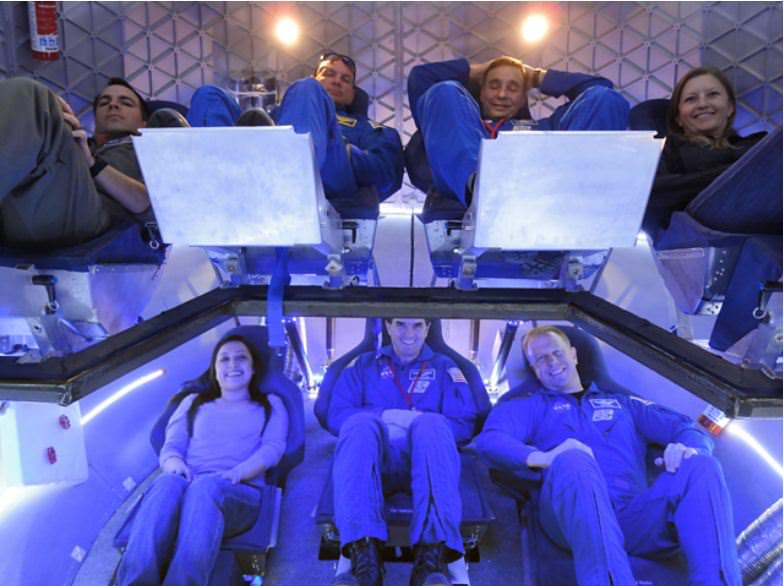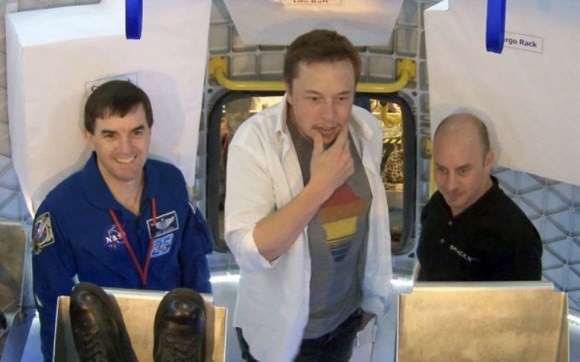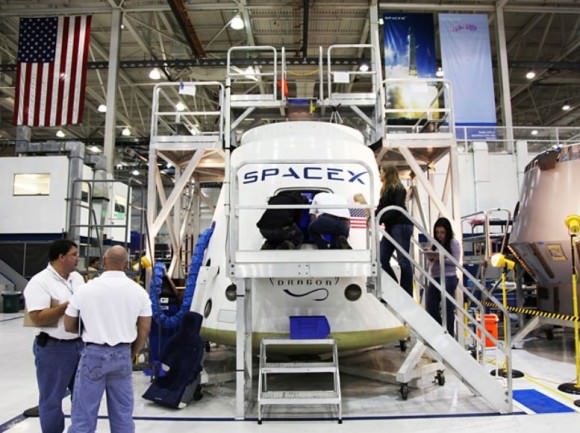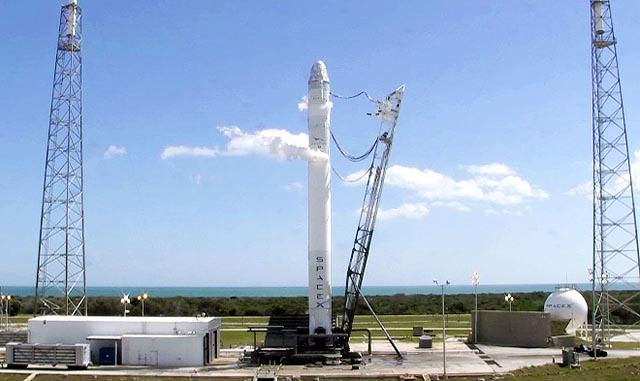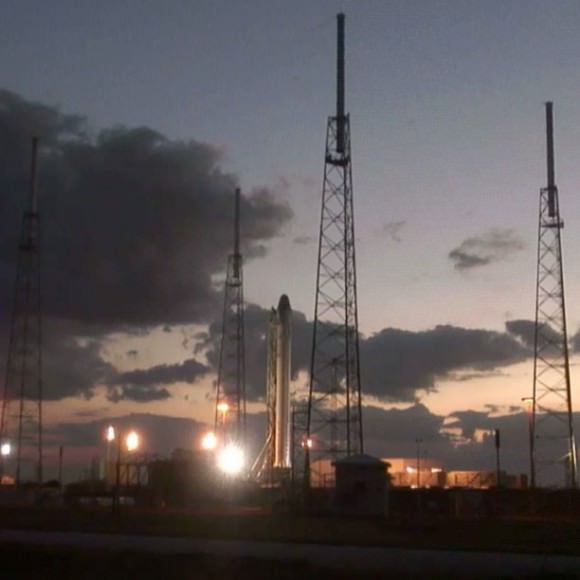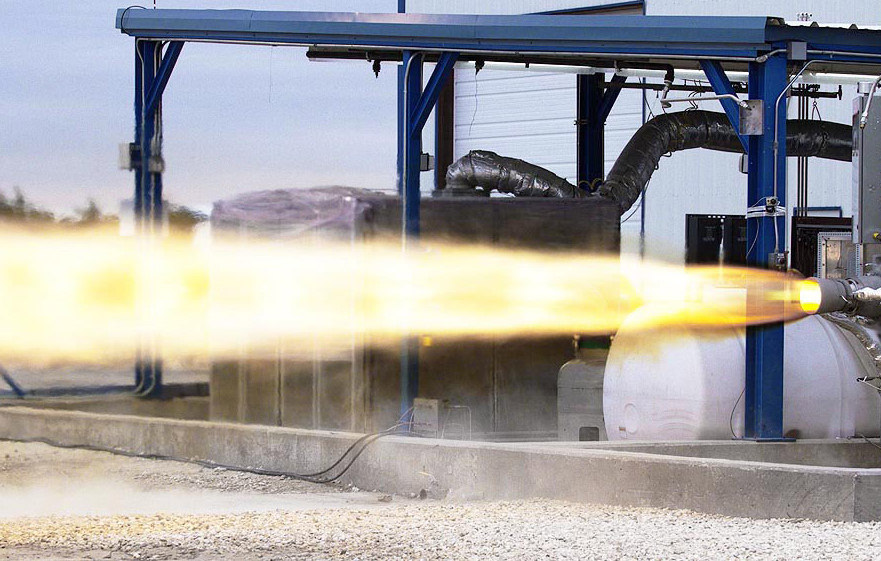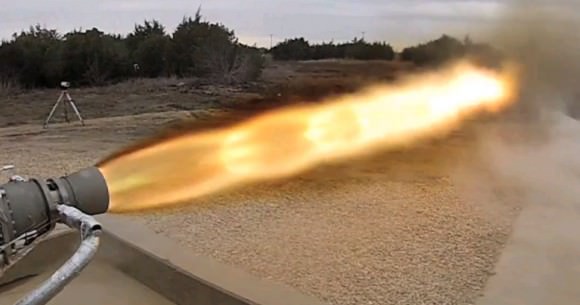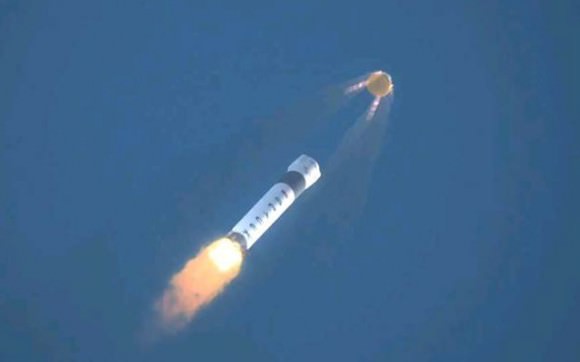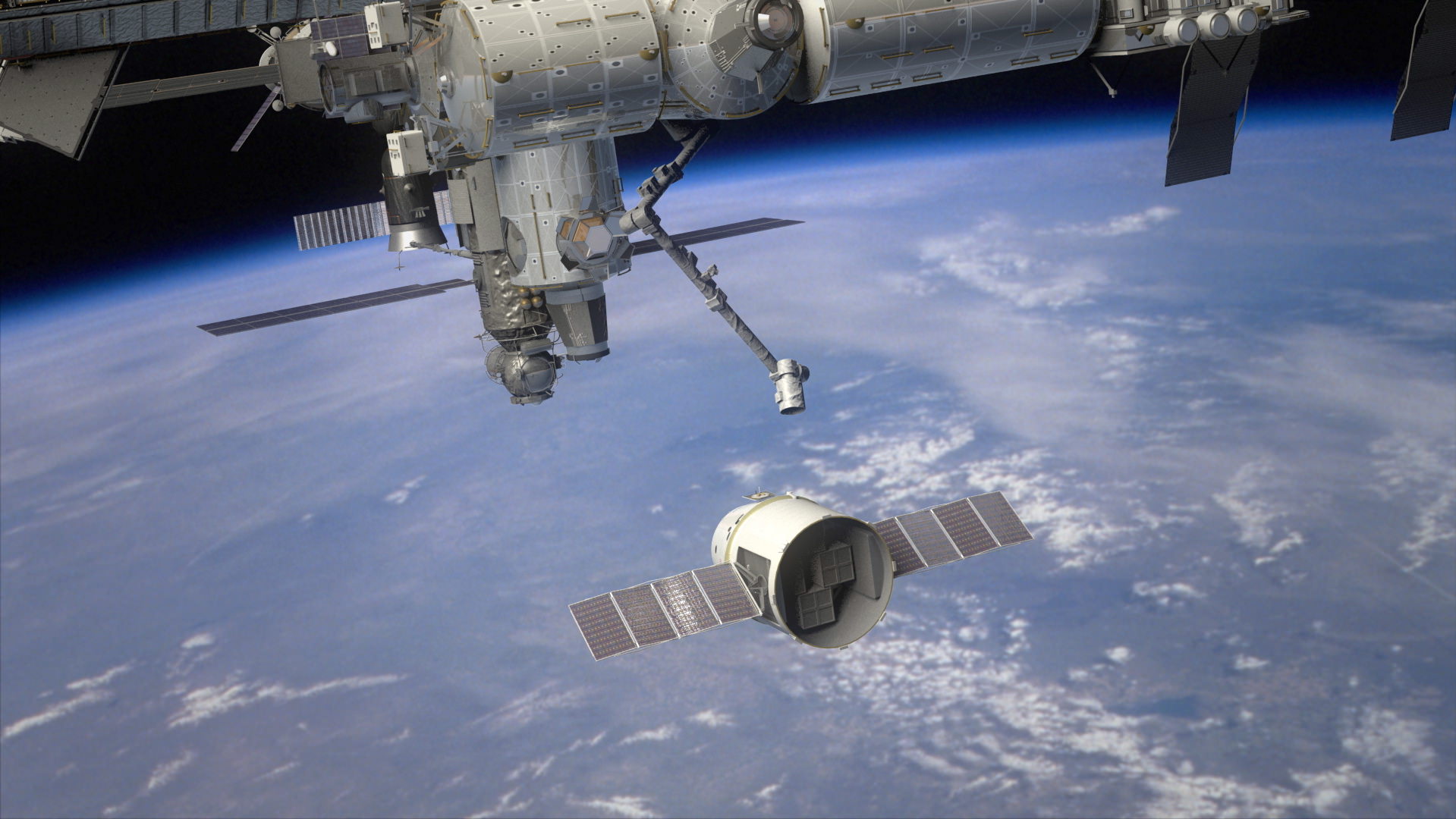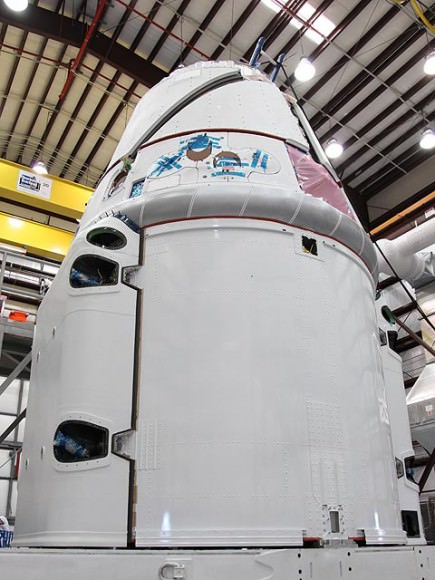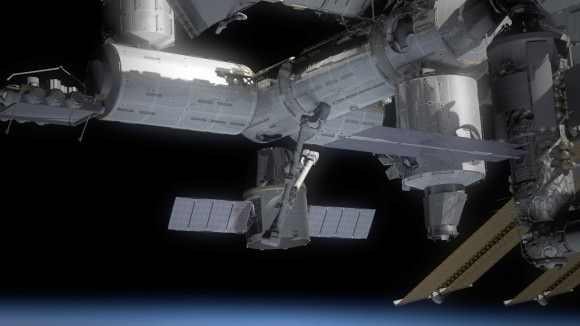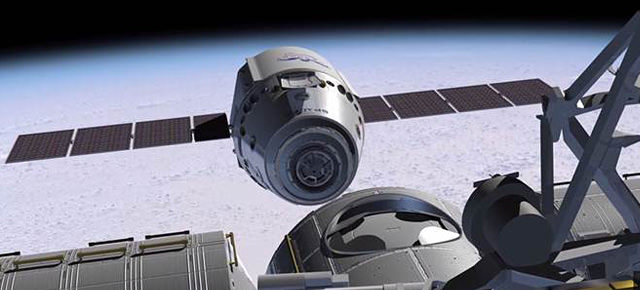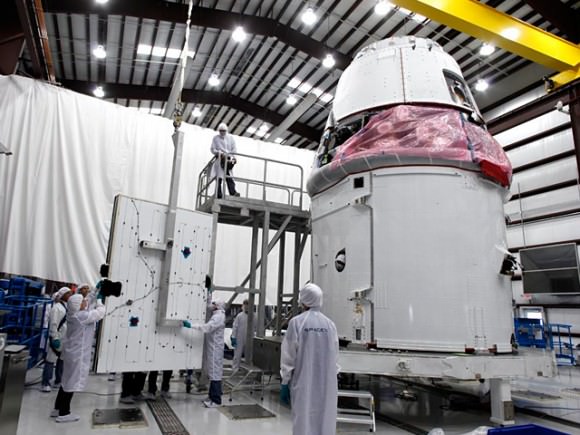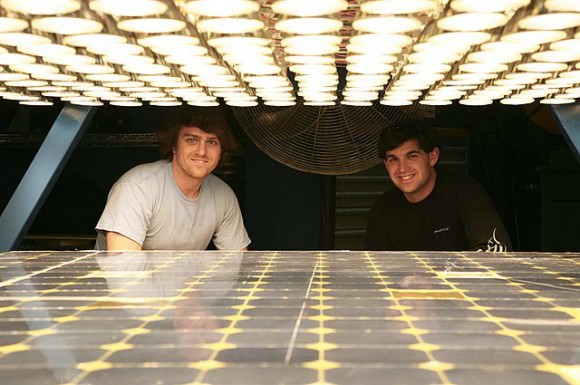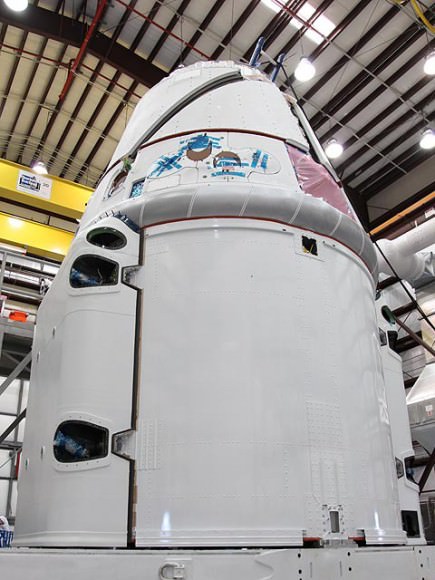[/caption]SpaceX has announced that the upcoming launch of the firms Falcon 9 and Dragon spacecraft on the commercial COTS 2 mission has been postponed to a new target date of no earlier than May 19 with a backup launch date of May 22.
On May 19, the Falcon 9 rocket would lift off on its first night time launch at 4:55 a.m. EDT (0855 GMT) from Space Launch Complex-40 on Cape Canaveral Air Force Station in Florida.
Two launch opportunities had been available this week on May 7 and May 10, following the most recent slip from April 30.
SpaceX managers made the decision – in consultation with NASA – to delay the COTS 2 launch in order to complete further highly critical testing and verifications of all the flight software requirements for the Dragon spacecraft to safely and successfully carry its mission of rendezvousing and docking with the International Space Station (ISS).
“SpaceX and NASA are nearing completion of the software assurance process, and SpaceX is submitting a request to the Cape Canaveral Air Force Station for a May 19th launch target with a backup on May 22nd,” said SpaceX spokesperson Kirstin Grantham.
“Thus far, no issues have been uncovered during this process, but with a mission of this complexity we want to be extremely diligent.”
May 10 was the last window of opportunity this week because of the pending May 14 blast off of a new Russian Soyuz TMA-04M capsule from the Baikonur Cosmodrome in Kazakhstan with three fresh crew members bound for the ISS which will restore the outpost to a full crew complement of 6 human residents.
The Falcon 9 and Dragon can only be launched about every three days.
The purpose of Dragon is to carry supplies up to and back from the ISS. Dragon is a commercial spacecraft developed by SpaceX and designed to replace some of the cargo resupply functions previously conducted by NASA’s fleet of prematurely retired Space Shuttle orbiters. At this moment the US has zero capability to launch cargo or crews to the ISS.
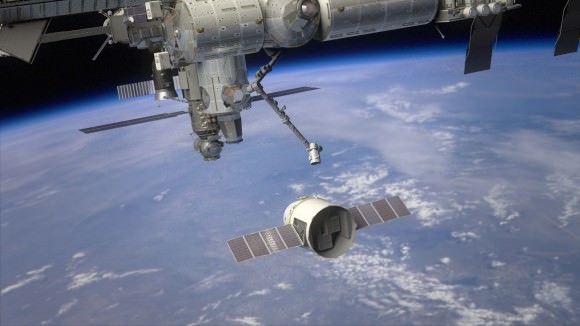
In response to the SpaceX announcement, NASA issued the following statement from from William Gerstenmaier, associate administrator for Human Exploration and Operations at the agency’s Headquarters in Washington:
“After additional reviews and discussions between the SpaceX and NASA teams, we are in a position to proceed toward this important launch. The teamwork provided by these teams is phenomenal. There are a few remaining open items, but we are ready to support SpaceX for its new launch date of May 19.”
SpaceX is under contract with NASA to conduct twelve resupply missions to the ISS to carry cargo back and forth for a cost of some $1.6 Billion.
Dragon is loaded with nearly 1200 pounds of non-critical cargo such as food and clothing on this flight.
The COTS 2 mission has been repeatedly delayed since the originally planned target of mid-2011 when SpaceX requested that the COTS 2 and 3 flights be combined into one mission to save time. The first Dragon docking to the ISS was initially planned for the COTS 3 mission.
